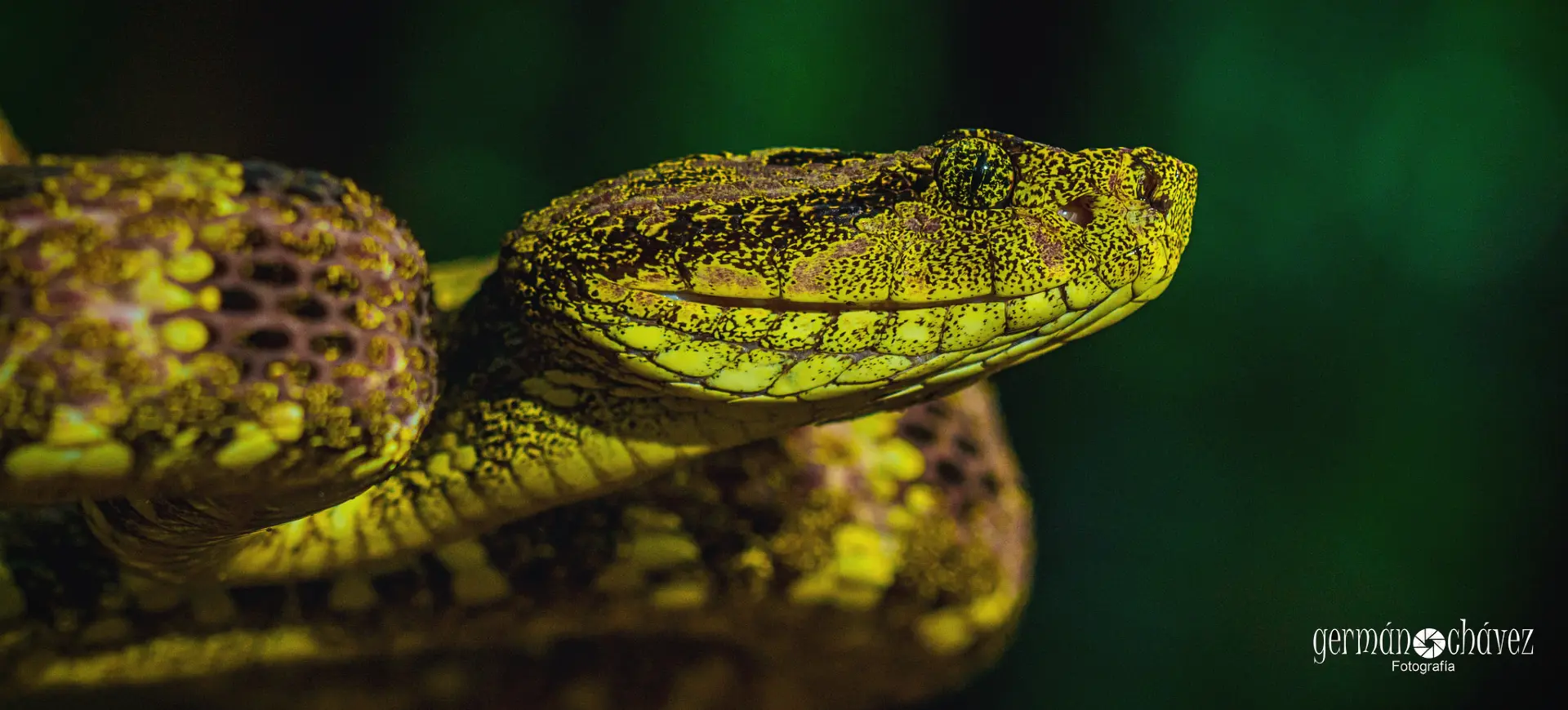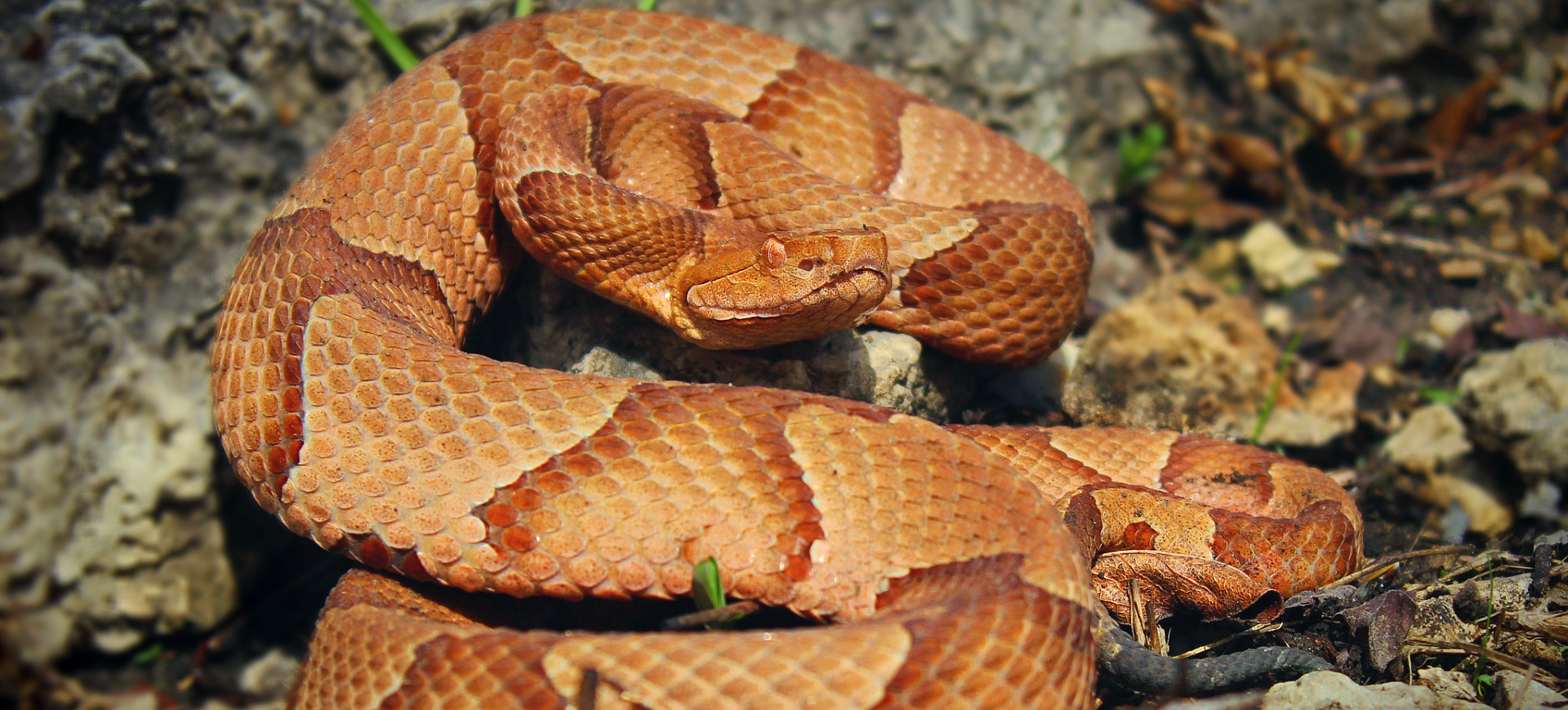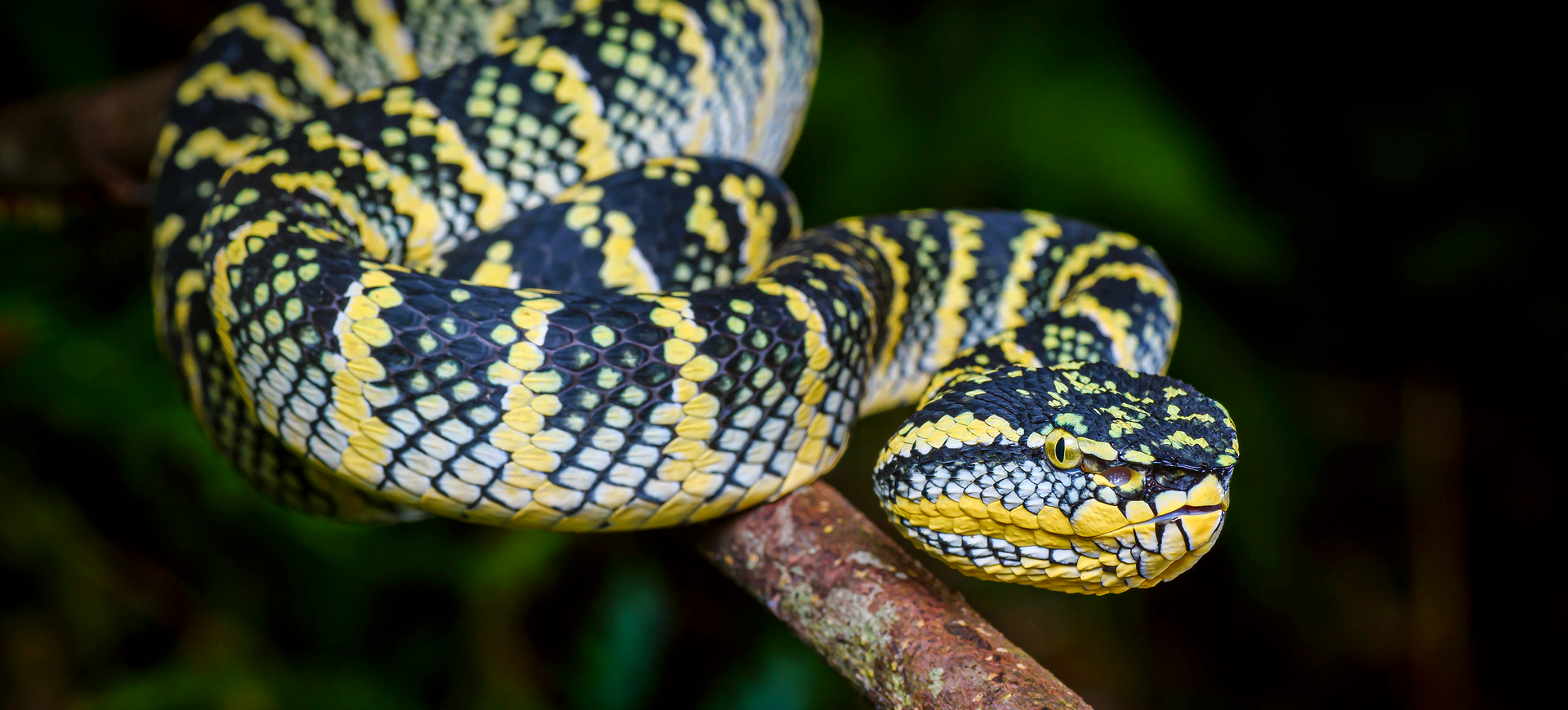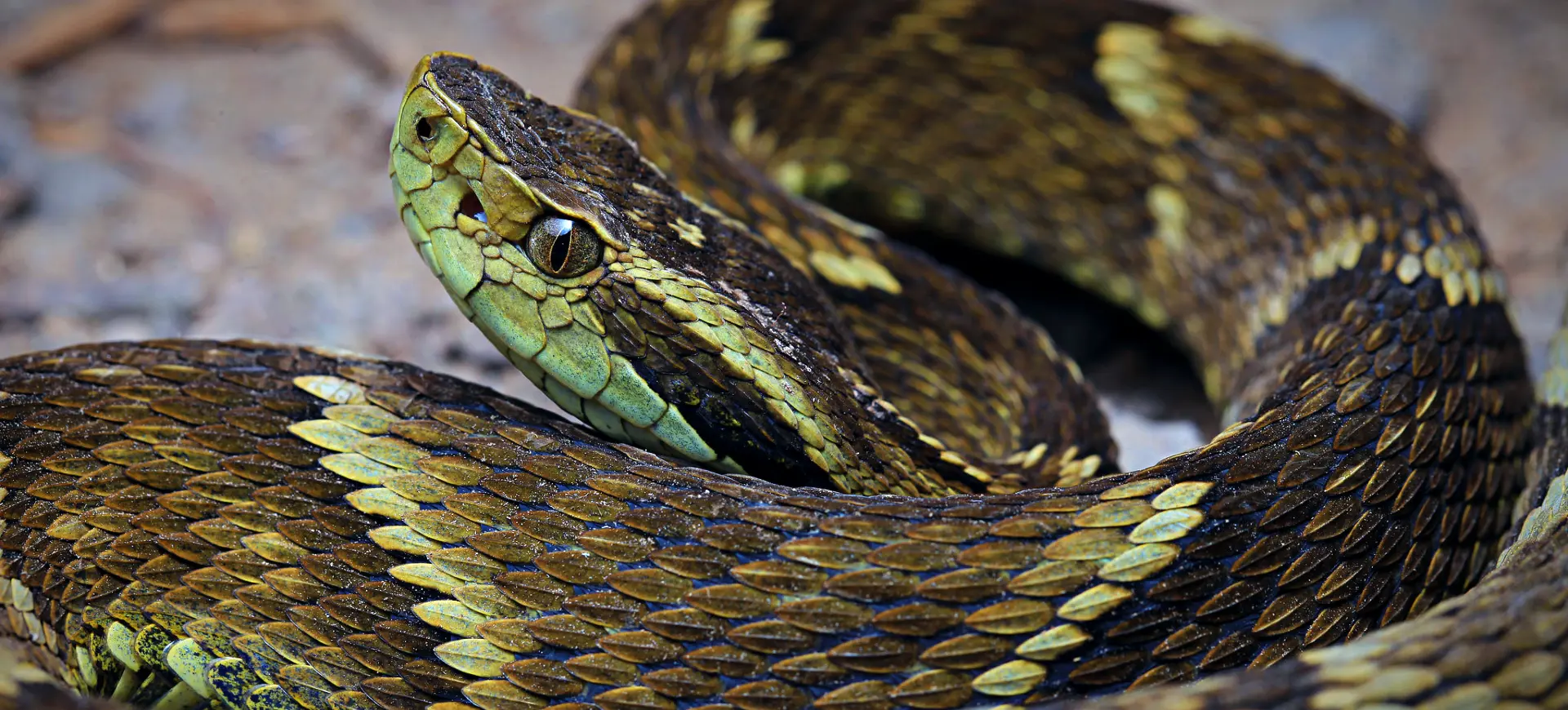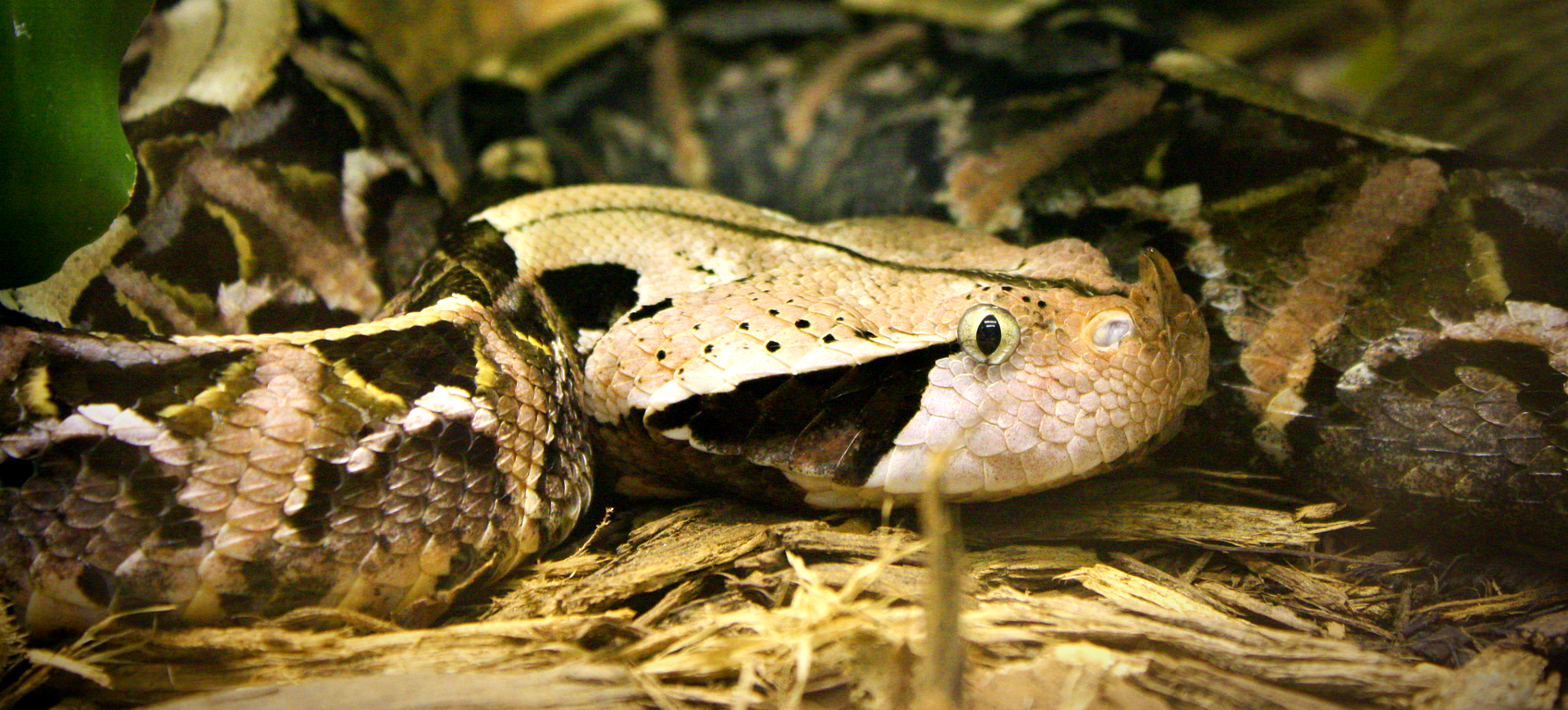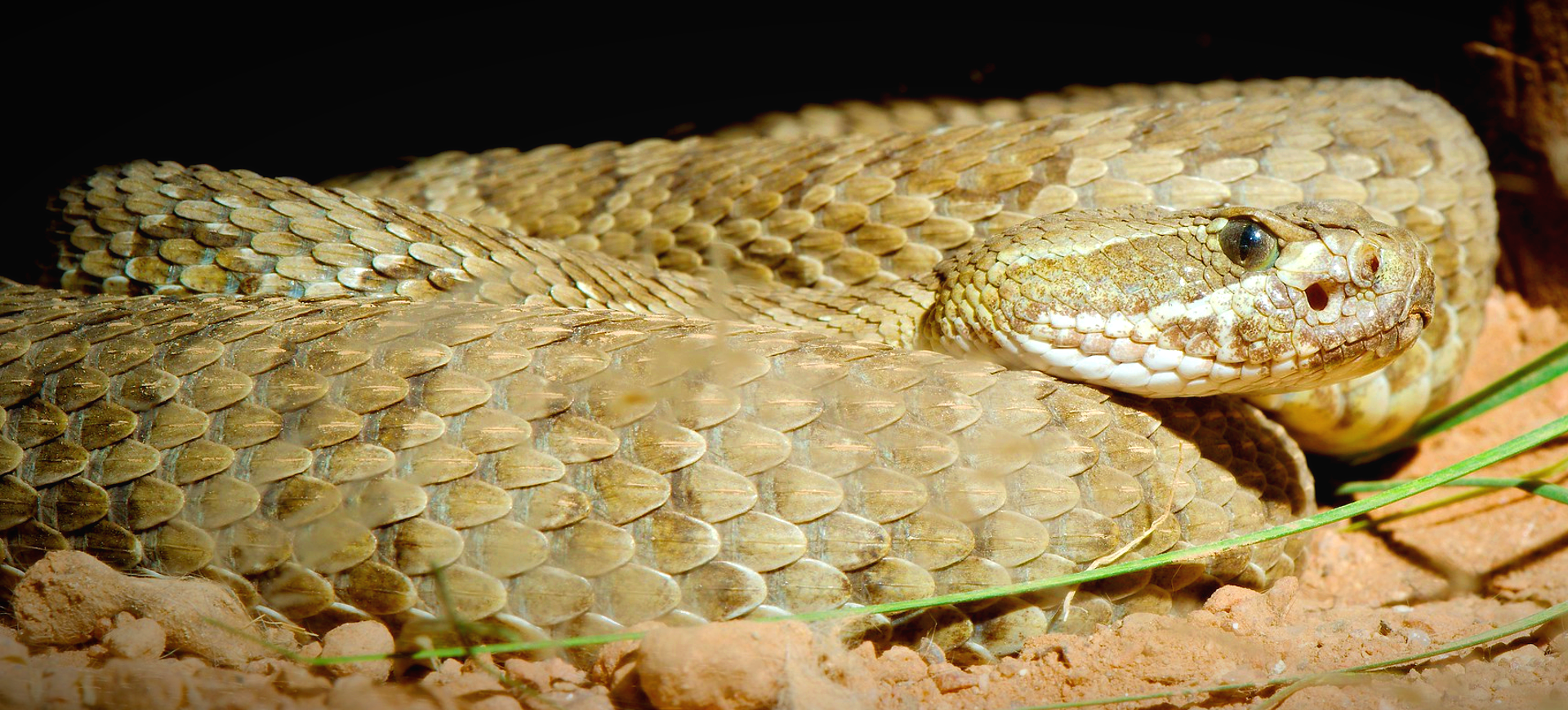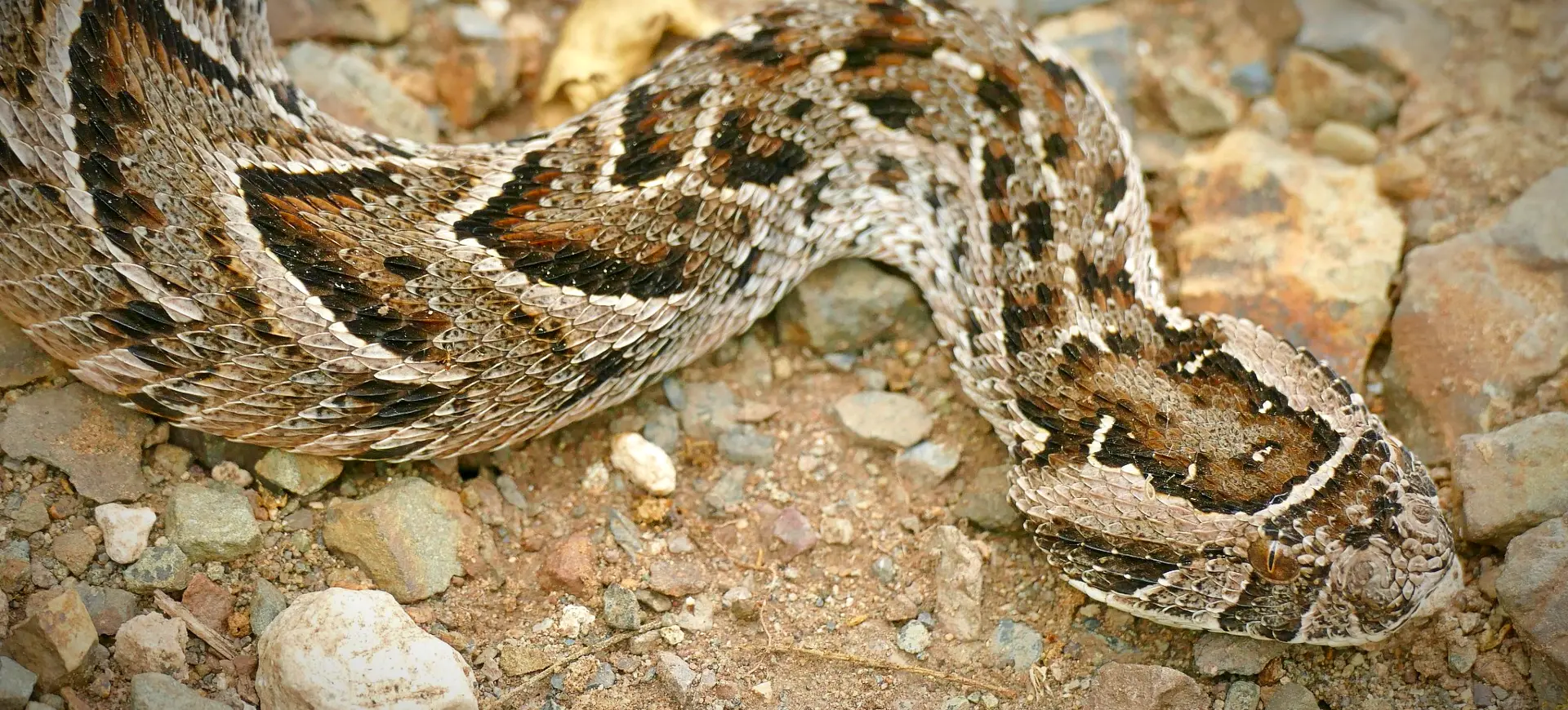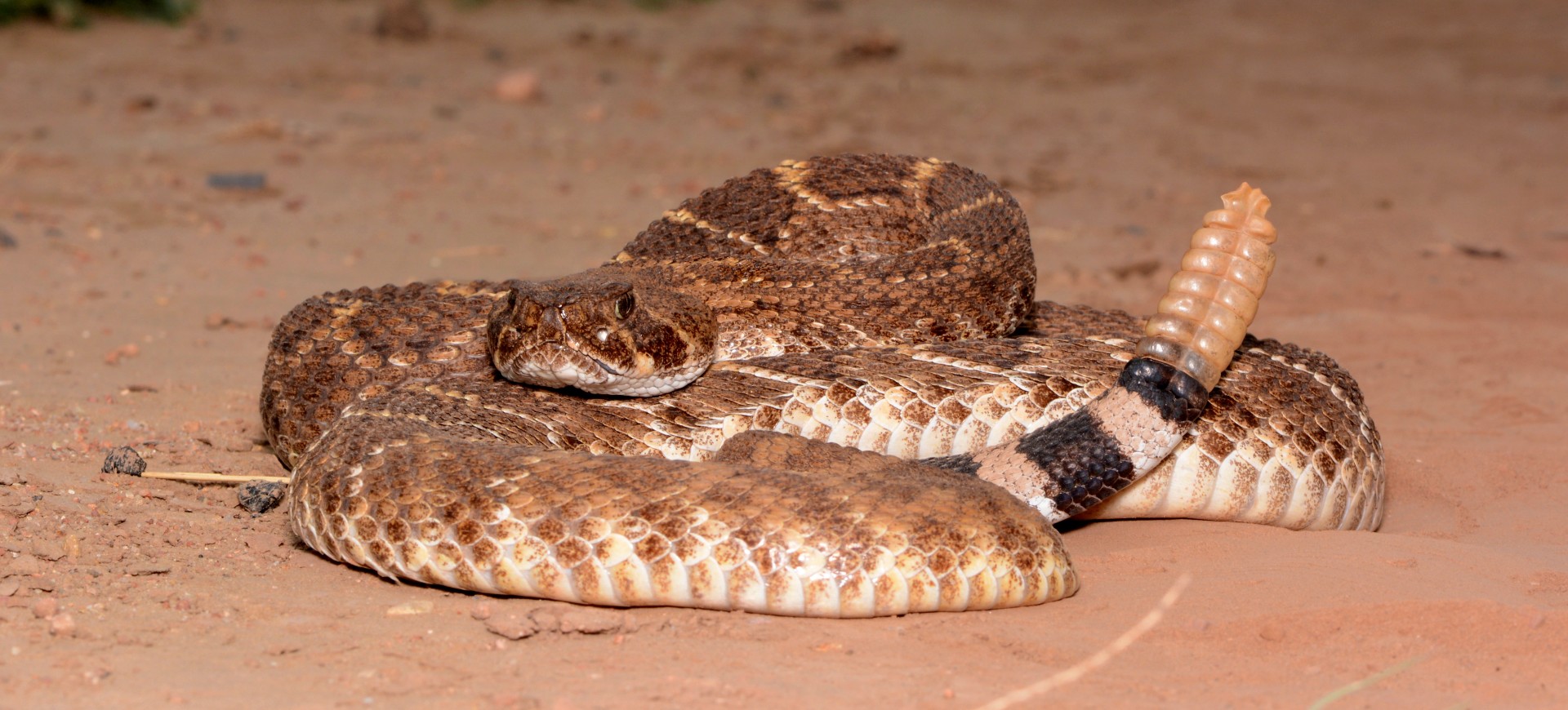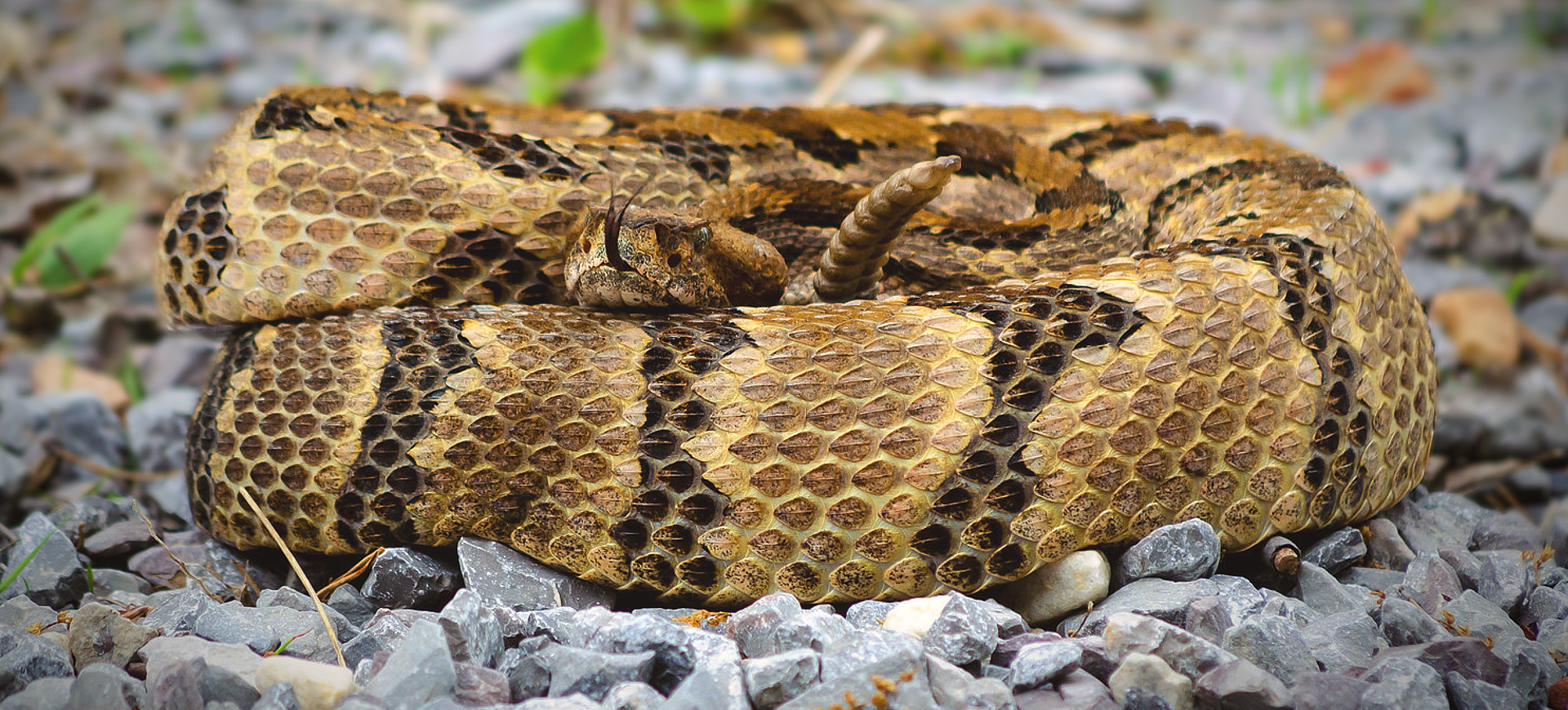Overview
The Sri Lankan Pit Viper, scientifically known as Trimeresurus trigonocephalus, is a venomous snake endemic to Sri Lanka. Belonging to the family Viperidae, it is known for its striking appearance and potent venom. The species is primarily arboreal, spending much of its time in trees and bushes. It is a medium-sized viper, with males typically being more vibrant in color than females.
Sri Lankan Pit Vipers are characterized by their broad, triangular heads, a distinctive feature that aids their sensory perception. Their eyes have vertical pupils, and the coloration of these snakes can vary significantly, ranging from green to blue and even purple. The body is robust and covered in keeled scales, providing texture and aiding in camouflage.
These snakes are primarily nocturnal, hunting for small mammals, birds, and sometimes reptiles during the night. They employ an ambush strategy, lying motionless and striking swiftly when prey comes within range. The venom of the Sri Lankan Pit Viper is hemotoxic, causing tissue damage and disrupting blood clotting.
Taxonomy
Kingdom
Phylum
Class
Order
Family
Genus
Species
Type
Physical Description:
The Sri Lankan Pit Viper is known for its striking and vibrant coloration, ranging from bright green to turquoise and even bluish or purplish hues. This coloration provides excellent camouflage among the foliage where it resides. The body is relatively thick and robust, with males slimmer and more colorful than females.
The head of the Sri Lankan Pit Viper is distinctively broad and triangular, a characteristic feature of pit vipers. This shape is due to their heat-sensing pits, located between the eyes and nostrils, which are used to detect warm-blooded prey. The eyes have vertically slit pupils, enhancing their nocturnal vision. The scales on the body are keeled, adding to their textured appearance.

Lifespan: Wild: ~15 Years || Captivity: ~20 Years

Length: Males: 20-24 inches (50-60 cm) || Females: 24-31 inches (60-80 cm)
Characteristic:
Native Habitat:
The Sri Lankan Pit Viper is endemic to Sri Lanka and is found in various habitats across the island. These habitats include rainforests, wet zones, and occasionally suburban areas with sufficient tree cover. They are primarily arboreal, spending much of their time in trees and bushes.
The species prefers areas with high humidity and moderate temperatures, typical of Sri Lanka’s wet zone. Its arboreal nature means it is often found in dense foliage, which provides cover and hunting grounds. The Sri Lankan Pit Viper’s adaptability to various habitats within Sri Lanka is a testament to its evolutionary success on the island.
Climate Zones:
Biomes:
WWF Biomes:
Biogeographical Realms:
Continents:
Countries:
Diet:
Diet & Feeding Habits:
Sri Lankan Pit Vipers are carnivorous, feeding primarily on small mammals such as rodents, birds, lizards, and occasionally frogs. Their hunting strategy is predominantly ambush-based, where they remain motionless and strike quickly when prey is within striking distance. The viper’s venom is a powerful tool in immobilizing prey.
These snakes have a slow metabolism and can survive long periods without food after a substantial meal. In their natural habitat, they play a crucial role in controlling the populations of their prey species, particularly rodents. When hunting, they rely on camouflage and heat-sensing pits to detect and accurately strike their prey, even in low-light conditions.
Mating Behavior:
Mating Description:
Little is known about the Sri Lankan pit viper’s specific mating behaviors in the wild. However, like other pit vipers, they will likely engage in combat dances during the breeding season, where males wrestle to establish dominance and access to females. Mating typically involves the male wrapping around the female to align their cloacae for copulation.
The species is ovoviviparous, meaning the females give birth to live young rather than laying eggs. The gestation period is not well documented but is believed to be several months. Females give birth to a litter of live young who are independent from birth and receive no parental care. The ability to give birth to live young is advantageous in their arboreal habitat.
Reproduction Season:
Birth Type:
Pregnancy Duration:
Female Name:
Male Name:
Baby Name:
Social Structure Description:
The Sri Lankan Pit Viper is a solitary species, with individuals typically living and hunting alone. They are territorial and may exhibit aggressive behavior when threatened or during interactions with other individuals of the same species. This solitary nature is typical for many venomous snakes.
During the breeding season, there may be some interaction between males and females, but they lead largely independent lives outside of this. Their arboreal lifestyle emphasizes their solitary and territorial nature as they navigate and hunt among the trees.
Groups:
Conservation Status:
Population Trend:
The population status of the Sri Lankan Pit Viper is not well documented. However, it is not currently considered endangered or vulnerable. It seems to maintain a stable presence within its native range in Sri Lanka despite threats from habitat loss and human activity.
The species’ ability to adapt to various habitats within Sri Lanka, including occasionally suburban areas, suggests a certain level of resilience. However, ongoing habitat destruction and potential persecution due to fear of venomous snakes could impact future population trends. Conservation efforts focused on habitat preservation, and public education is important for their continued survival.
Population Threats:
The primary threats to the Sri Lankan Pit Viper include habitat loss due to deforestation and human expansion into natural areas. Urban development and agriculture can reduce the availability of suitable arboreal habitats. Additionally, being a venomous species, they are often feared and may be killed on sight by humans.
Pollution and changes in land use can also impact their prey availability, affecting their survival. Climate change may alter their habitat conditions, although the specific impacts are poorly understood. The species’ limited distribution, being endemic to Sri Lanka, makes it particularly susceptible to localized threats.
Conservation Efforts:
Conservation efforts for the Sri Lankan Pit Viper are not specific to the species but fall under broader initiatives to conserve Sri Lanka’s biodiversity. Protecting natural habitats, particularly rainforests and wet zones, is crucial for their survival. Efforts to minimize deforestation and regulate land use changes are important.
Public education and awareness about the ecological role of venomous snakes can reduce persecution. Promoting coexistence with wildlife, particularly in areas where humans and snakes overlap, is key. Research into the species’ ecology, behavior, and population dynamics would aid in developing targeted conservation strategies.
Additional Resources:
Fun Facts
- The Sri Lankan Pit Viper’s vibrant coloration makes it one of its region’s most visually striking snakes.
- Thanks to their highly evolved sensory organs, they can strike with impressive speed and accuracy.
- Despite their evil nature, bites to humans are rare and usually occur when the snake is provoked or accidentally disturbed.
- The heat-sensing pits between their eyes and nostrils allow them to detect warm-blooded prey in complete darkness.
- They are capable of “sidewinding” movement, which is effective for navigating through trees and bushes.
- The species demonstrates a remarkable ability to blend into its environment, making it a master of camouflage.
- Their venom contains enzymes and proteins that interest medical research, particularly in understanding hemotoxic effects.
- In Sri Lankan culture, the Sri Lankan Pit Viper is often associated with fear and fascination due to its striking appearance and evil nature.
- These snakes can remain motionless for long periods, which aids in ambushing prey and avoiding detection by predators.
- The young of the Sri Lankan Pit Viper are born fully formed and capable of fending for themselves, including hunting and using their venom.





